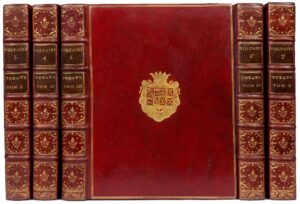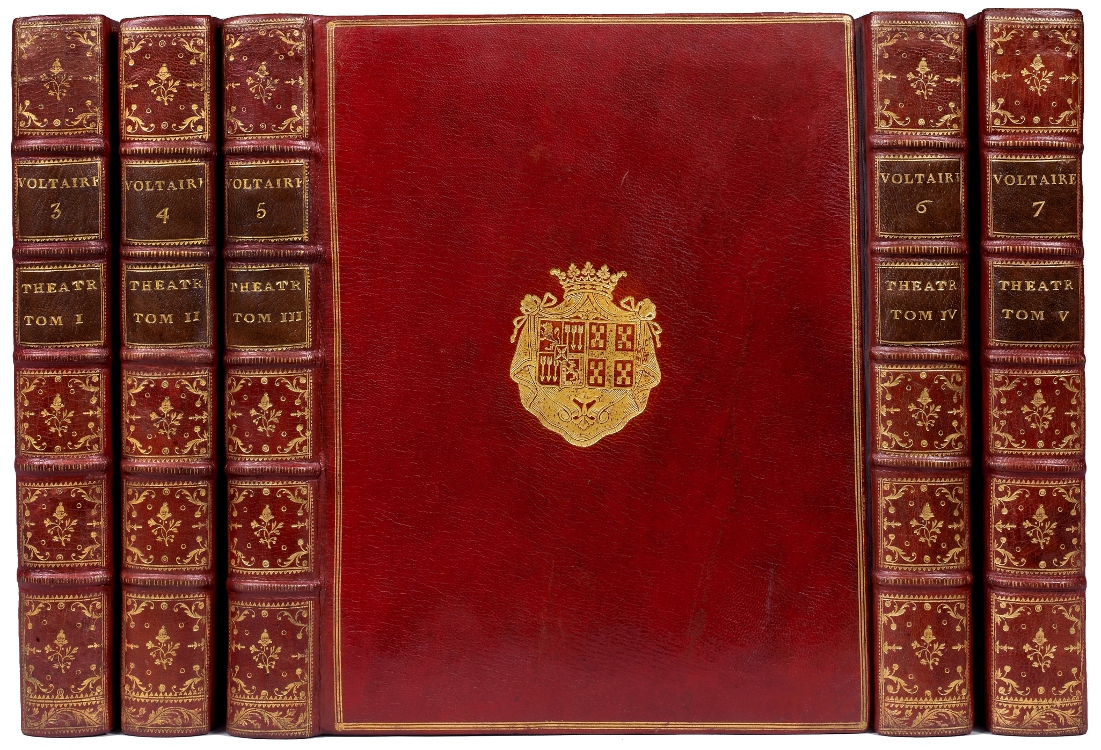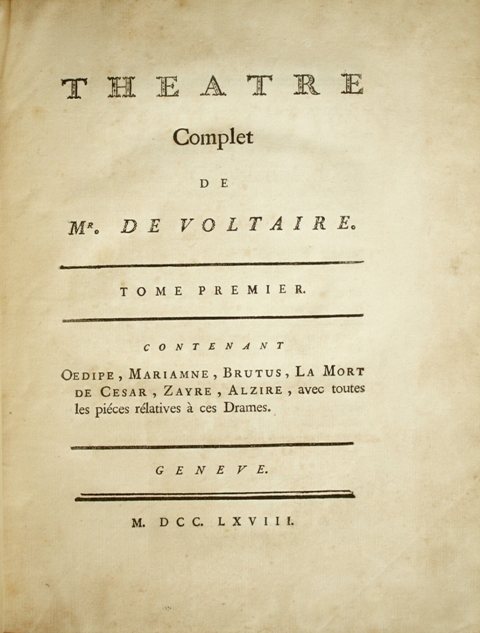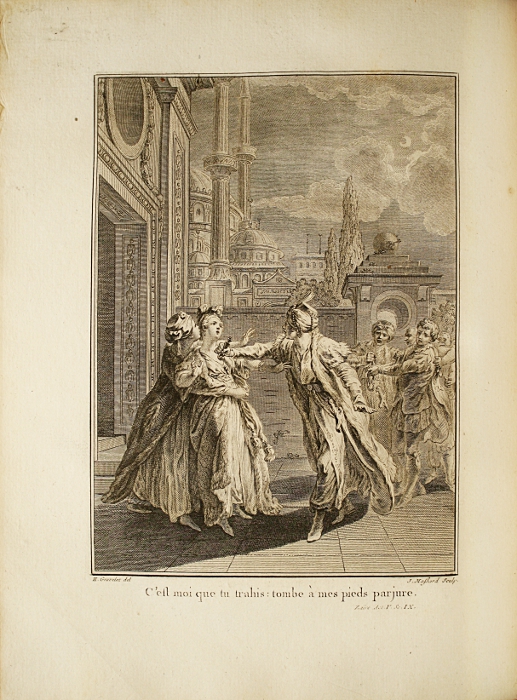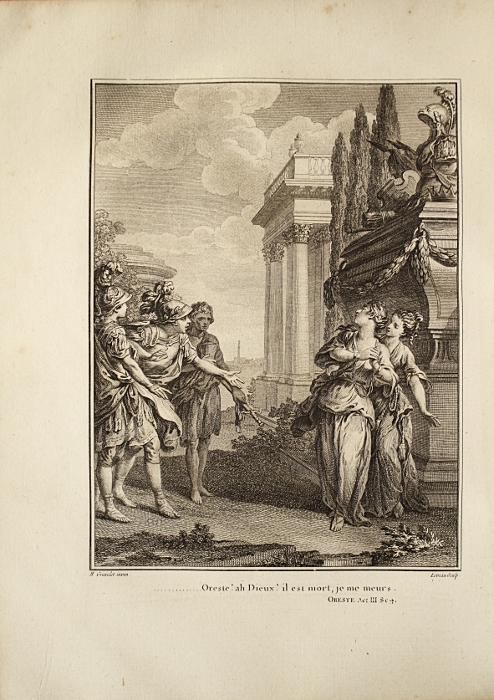Genève, 1768.
The complete Theatre in 5 parts (Theatre V.1 to V.5, meaning volumes 3 to 7 of the “Collection Complète des Oeuvres de Voltaire” printed in Geneva, 1768-1774 in 30 volumes). Illustration: 32 plate out of pagination.
The whole was bound without the frontispiece. 5 parts in 5 volumes 4to [269 x 208 mm] bound in full contemporary red morocco, triple gilt fillet around the covers, large arms gilt-stamped in the center, spines ribbed and finely decorated, brown morocco lettering pieces, inner gilt border, gilt edges. Contemporary binding.
Voltaire’s complete theatre, partly revised by the author. Cohen 1040 ; Brunet, V, 1353.
It’s the first illustrated 4to edition, which includes 32 plates out of pagination in first state by Gravelot engraved by de Launay, de Lorraine, Duclos, Flipart, Helman, Le Vasseur, Leveau, de Longueil, Masquelier, Massard, Née, Ponce, Rousseau, Simonet and Tilliard.
Since 1761, the Cramers had been thinking about giving a new edition of Voltaire’s Works “with very beautiful prints”.
« I’ve read this new 4to edition of my Works produced in Paris, writes Voltaire to Panckoucke on February, 1st, 1768. I’m very pleased with how exact and perfect this edition is. I find it very beautiful”.
Voltaire has leaded his career as a man of letters both in poetry and in theatre. This is in fact for his plays that he wished to go down in history. This edition includes the author’s most known plays, that is to say: Zaïre, Adélaïde du Guesclin, Alzire ou les Américains, Mahomet ou le Fanatisme, La Mérope française, Sémiramis, Nanine, ou le préjugé vaincu, Le Duc de Foix, L’Orphelin de la Chine, Le Café ou l’Écossaise, or Les Scythes. The exotic side of some plays is inspired by the Lettres édifiantes et curieuses, which he was an avid reader of. Besides, he was considered, in his century, as Corneille’s and Racine’s successor, even sometimes their triumphant victor; his plays had a huge success, and the author won recognition in 1778 when, on the stage of the Comédie Française, his bust was crowned with laurel wreath, in front of an enthusiastic orchestra.
« ‘Zaire’ delighted the entire XVIIIth century, and, in spite of the critics it since endured, it remains one of the greatest works of all our tragic theater, not less. It established the poet’s genius, hitherto challenged. Disciple of Corneille and Racine, Voltaire started by walking on their steps, but also by bringing to the stage, since he started, the freedom of thought that animates all his plays. The study of the English theater strengthens his genius and opens some new roads. ‘He took from Shakespeare’s ‘Othello’ the subject of his tragedy ‘Zaire’; once again he wins over the Englishman. This tragedy by Voltaire has been translated into English and played on the London stage concurrently with ‘Othello’. The English themselves gave ‘Zaire’ their preference.’» Louis MOLAND.
A precious copy specially bound in contemporary red morocco with the arms of Beatrix de Choiseul-Stainville -1730-1794), duchess of Gramont, sister of the duke of Choiseul, secretary of State for Louis XV.
